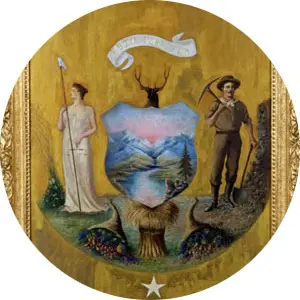Mock Orange: A Profile
A Sweet Surprise for Summer
by Marcia Wilson

The Mock Orange Tree holds significant cultural value in the Pacific Northwest.
An Unexpected Flowering
Mock orange (Philadelphus ) surely tops my list of the world’s most devastatingly delicious flower scents. It’s sweet but not cloying; penetrating yet in no way nauseating, as some intense flower-fragrances reportedly are to certain unfortunate souls.–Kate Bryant
Three years ago, a mock orange Philadelphus lewisii was found on the CPTC Outdoor Lab’s uplands. A puzzle was attached to this fragrant waterfall of white blossoms and lush green leaves: it was growing out of its own stump!
Why someone would have cut this native tree down remains a mystery. Thankfully it did survive and went on to bear many flowers and seeds for the future. In the spring, it hosts a plethora of wildlife. Hummingbirds, songbirds, native pollinators are the most common. In the wilder areas the deer and elk are seen browsing the younger growth. In Central Washington, mule deer hide under their branches in poor weather. It is not poisonous for cattle, so the tree was not actively destroyed by settlers.
Mock oranges are found from Montana to British Columbia and California; in Western Washington they are aligned with Douglas Fir, Western Hemlock and Garry Oak ecosystems. All three of these are represented in the Outdoor Lab.
A Useful Wood, but Which?
“Many Pacific Northwest tribes (including the Cowlitz, Klamath, Lummi, Nlaka’pamux, and others) have made combs, cradle hoops and hoods, knitting needles, baskets, snowshoes, harpoon shafts, fishing spears, bows, arrows, clubs, breast plates, tools, and pipe stems from the wood. The leaves and bark have been used to make soap. The leaves have been used to treat skin swellings and sores, and skin infections. A decoction branches have been used to treat eczema, hemorrhoids, and sore chests.”—WA Native Plant Society
Mock oranges have a long ethnobotanical history and are culturally significant. The wood is light and strong and a reliable source of small tools like knitting needles, weaving sticks, diggers, and arrows. A common English-language name for this tree is Arrowwood.
The English surname Arrowwood comes from specific areas in the United Kingdom where certain trees and shrubs were grown to make arrows, but this is not the same Arrowwood as the Mock Orange. It is an interesting example of similar cultural practices across the globe.
White Pipe Wood, Blue Pipe Wood
Thanks to badly written books written as far back as the 16th century, the Mock Orange is mixed up with the lilac. By 1597, they were both called called Syringa. Lilac was the S. cerulea (Blue Pipe) and the Mock Orange was S. alba (White Pipe).
Why Syringa? Both had hollow stems like pipes, and syringa means pipe. This is where the word syringe comes from. Going back further, and there is the Greek story of a river-god’s daughter who transformed into a hollow reed to avoid unwanted attentions. Her name was Syrinx.
A Peaceful Home for Birds, Butterflies, and Bees.
“It’s like a VIP lounge for pollinators.”—gregg.app
Mock oranges are an easy choice for the backyard gardener. They pretty, hardy, and capable of withstanding weather conditions that would weaken or kill many ornamentals. In the constant debate on growing native plants for their value and practical maintenance, P. Lewisii is a no-brainer. It stops crowds with its perfume and appealing foliage.
In an urban landscape it provides for western pollinators with a highly nutritious nectar and a dense leaf cover. The tree is easily pruned and trained into a hedge that needs no protection from summer sun. While it needs some water in the dry months, but not as much as the average rosebush or lily.
Hello, There?

“One of the loveliest, but remarkably underused, natives of the late spring/early summer is our native Mock Orange, Philadelphus lewisii”–Portland Nursery
This June, mock oranges had one more surprise for CPTC. While patrolling campus for wildflowers, Dr. Faust confirmed the thick green hedge between Buildings 17 and 21 were, surprisingly, also P. lewisii. The unmistakable smell gave it away.
Student: “Is that…a mock orange??”
Dr. Faust [bending down and sniffing]: “it is!”
You’re A Rock Star
Mock Orange is the name of an Idaho band. (A surprising number of Indie rock groups named after flowers, like Spirea, Krokus, and Bluebells)
Fun Fact:

The flower is on the state seal of Idaho designed in 1891, flanking a Suffragette Goddess.